Power of emPathy
Why kids utilizing emotional skills may be the cure for bullying

Why kids utilizing emotional skills may be the cure for bullying
Lucie Fink on her unique professional journey, her relatable postpartum experience, and how she balances her family’s privacy


smile!
Dentists share tips on keeping your kids’ teeth healthy
100-00 Beach Channel Drive
Rockaway Park, N.Y. 11694
Denise Harper-Richardson, Principal (718) 634-1970
CVSR.info

It is no t too l ate to apply o r make adjus tm ents to your child's Mi ddle o r H igh School Appli ca tion
NYC DOE announced that late applications can be submitted for high school until Friday, January 20th & Middle School until Friday, February 17th. Currently, applications can only be submitted by your child’s guidance counselor or authorized school official The application codes for Channel View School for Research are as follows:
Middle School
Program Name Program Code
Expeditionary Learning Q262S
• Sports - Dance, Soccer, Lacrosse, Basketball, Flag Football, Tennis, Baseball, Volleyball, Girls Volleyball, Boys Baseball & Basketball
• Millennium After School Program
• After School Academic Enrichment
• Summer Bridge Program
• Community Service Projects
• Farm Trip
• Gymnastics & Cheerleading
• Marine Biology and Oceanography
• Robotics and Engineering
• Earn 6 high school credits and 3 Regents
• After School Clubs; College Trips
• Mentoring Programs
• Karate
• Culinary
High School Program Name Program Code College & Career Readiness Program Q97X Research Technology & Robotics Program Q97A
HIGH SCHOOL HIGHLIGHTS
• 99% Graduation Rate
• 100% Of Students Accepted To Colleges
• Advanced Placement Courses
• College Now, Internships
• PSAL Sports - Baseball, Basketball, Football Volleyball, Tennis, Track, Lacrosse
• 9th Grade Crew Camping Trip
• Studio Art, Chorus, Instrumental & Marching Band
• Computer Technology, Performing Arts
• Marine Biology and Oceanography

• Robotics and Engineering
• After School Clubs; College Trips
• Mentoring Programs
• Karate
• Culinary
www.myschools.nyc
We are Rockaway’s best kept secret
Where your child’s education is secure with us...
Apply Now:









12 | Parenting
Talking to kids about miscarriage
34 | cover: lucie Fink
Lucie Fink’s on her unique professional journey, her relatable postpartum experience, and how she’s balancing being a public figure with keeping her family’s privacy intact stories &
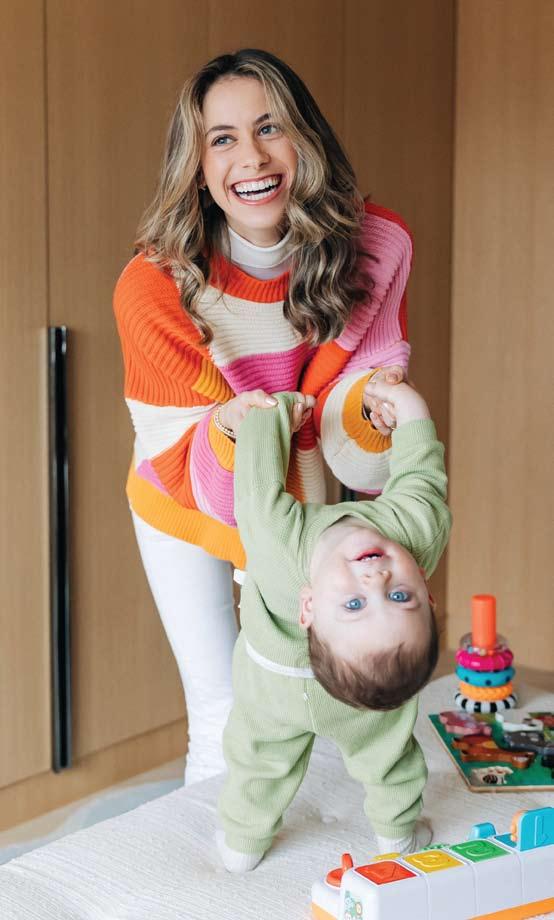
6 | editor’s letter
8 | a sk the e xpert
Peaceful Parenting and how it works
14 | education
Everything you need to know about Catholic Schools

20 | Family Fun Kids’ Night on Broadway
22 | Health Keeping kids’ teeth healthy

24 | c amps
10 reasons your teen might love to be a camp counselor
26 | a sk the e xpert
Should I make my kids hug their relatives?
28 | Family Day o ut The Museum of Broadway
30 | Family Day o ut American Girl store guide
32 | a sk the e xpert
Why empathy is the key to preventing bullying
38 | crafts
Valentine’s Day Hot Air Balloon
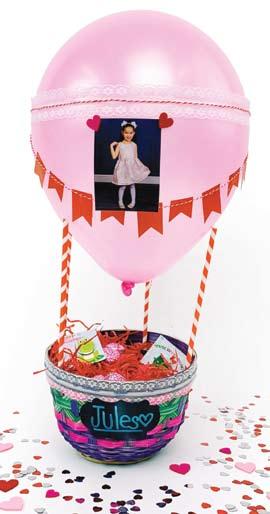
Family FU n
36 | c alendar
All the fun events and activities for February
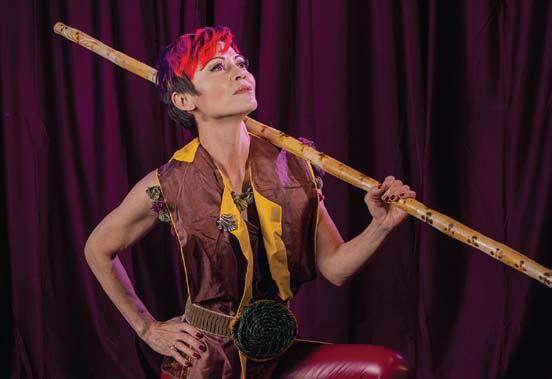
Dire C tories
18 | charter School listings
on tH e cover
Photo: Yumi Matsuo | yumimatsuostudio.com
Hair & Makeup: Buffy Hernandez | buffysaintmarie.com
Cover Story written by: Cris Pearlstein
Produced by: Donna Duarte-Ladd





















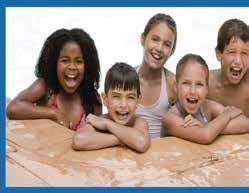







Spring may be around the corner, but winter lingers, yet the days are becoming brighter. This means it is a great time to check out a local event (page 38) or curl up on the couch and read our latest issue; happy February!
Teeth brushing and dental care for the kids starts early, and there are some great hacks to keeping those new teeth in good shape — our Dental Partners (page 22) share how to keep kids’ teeth healthy.
Bullying, unfortunately, impacts many kids daily, whether through social channels or IRL. It frankly sucks, and any form of it is heartbreaking. We asked experts to weigh in, and they shared the simple answer: compassion. Check out this must-read, Why
Empathy is the Key to Bullying (page 32). Helicopter, Tiger, Dolphin and FreeRange are some popular parenting terms, but have you heard of Peaceful Parenting? For one, it’s a chill way of parenting, and we have all the details (page 8).
We love this month’s cover mom Lucie Fink. Our Editor at Large, Cris Pearlstein, chatted with this new mom and prolific content creator on her unique professional journey, her relatable postpartum experience and balancing being a public figure with keeping her family’s privacy intact.

Publi SH er: Clifford Luster
e xecutive Director: Donna Duarte-Ladd
aSSociate Publi SH er: Erin Brof
aDverti S ing Director: Stacie Goldberg
DePuty eDitor: Jeannine Cintron
Digital eDitor: Kaitlyn Riggio
e vent S manager: Shara Levine
r e P orter: Barbara Russo
Senior aDvi S er: Susan Weiss
Partner SH i P manager S : Lauren Alperin, Lauren Anchin, Joan Bergman, Mary Cassidy, Chris Cunnington, Lori Falco, Shelli Goldberg-Peck, LynnMarie Hanley, Lisa Herlihy, Janine Mulé, Cara Roteman, Nina Spiegelman, Gwen Tomaselli
marketing & Strategy Director: Rosalia Bobé
Sale S & marketing coor D inator: Mykael Fields
marketing aSS i S tant: Tilejah Gilead
art Director: Leah Mitch
web Develo P er: Sylvan Migdal
g raPH ic De S igner S : Arthur Arutyunov, Connie Sulsenti
eD itor S at large:
Serena Norr, Cris Pearlstein
eD itorial contributor S : Jana Beauchamp, Mia Salas
eD itorial i ntern S : Tiana Henriquez, Adam Mobley, Campbell Schouten
aDverti S ing : (718) 260-4554
Advertising@NewYorkFamily.com
circulation: (718) 260-8336
Tina@NewYorkFamily.com
aDD re SS : New York Family Media/Schneps Media 1 MetroTech Center North, Third Floor Brooklyn, NY 11201
Pre S i D ent: Victoria Schneps-Yunis
ceo : Joshua Schneps
coo : Clifford Luster
New York Family has been awarded the PMA Gold Award for Excellence in Editorial and the Silver Award for Excellence in Design.
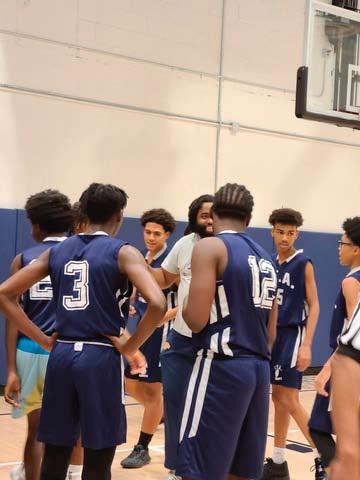



We are a diverse, equitable, inclusive community with a focus on student voice.

Rigorous Academic Programs
Advanced Placement (AP) Classes
Co-Taught Classrooms
Special Education Team
English Language Learners (ELLs) program
20+ School Clubs

Athletics Programs with Championship Teams
Basketball Flag Football
Volleyball Track & Field
Social Emotional Support
Social Work Team & Interns School Counselor
Holistic Programs via Partnership with The Door

Adolescent Health Center for Medical & Dental Care
Summer Youth Employment (SYEP)
Work, Learn & Grow (WLG)
After School Arts
College Advisement
Internships
SAT Prep
Legal Services & more
APPLY TODAY!
9th Grade Seats AVAILABLE
555 Broome Street, New York, NY 10013
TRAINS: 1/6/A/J/N/Q/Z to Canal • C/E to Spring • B/D/F/M to Broadway-Lafayette • R/W to Prince

BUSES: M20/M21/M55
FOR MORE INFORMATION: www.broomestreetacademy.org/admissions
CONTACT: Ms. Ruth D. Caraballo (hablo español) admissions@broomestreetacademy.org or at 929.285.3176, M-F 9AM-4PM
We all know parenting can be challenging which is why many of us parents love to share and commiserate about what is and is not working in our parenting journeys. Maybe you chatted or heard about the Peaceful Parenting Revolution, and if the words ‘parenting’ and ‘revolution’ pique your interest — you’re not alone. But what exactly is it? Is it doing yoga with the kids or burning some sage?
We connected with parenting expert and author of the new book The Peaceful Parenting (R)evolution , Kiva Schuler, the Founder & CEO of The Jai Institute for Parenting (jaiinstituteforparenting.com), where Kiva trains parenting coaches to help families parent with compassion, balance and communication.
What is the Peaceful Parent Revolution?
In today’s chaotic world, there is a need for a radically different approach to parent-
ing. One that helps parents and children create a life-long bond by accessing emotional intelligence, conscious communication, and an understanding of our children as evolving human beings. The Peaceful Parenting (R) evolution redefines the way parents support their children as they face the complex challenges of this world.
The real change that Peaceful Parenting advocates is that parents shift their role from disciplinarian to being our child’s mentor and guide. Traditional parenting strategies like punishments, arbitrary consequences (meaning the consequence isn’t directly related to the mistake our child made) and “tough love” aren’t necessary to teach children values, boundaries, rules and morals.
Today, more than ever, our children need us to be their safe-harbor, knowing that they can trust us to support them through the ups and downs of life.
When we give children what they need, they will give us what we need. The shift to Peaceful Parenting creates a family system
where every person in the family’s feelings and needs matter, and families thrive.
In what way do parents (unintentionally) bring their generational trauma into their parenting?
One of the biggest myths of parenting is that it “comes naturally.” But what actually comes naturally is affected by the way we were parented. Especially in moments of highstress, overwhelm, exhaustion or conflict.
Our emotional reactivity is the outcome of the culture we experienced in the home we grew up in. Whether you avoid conflict at all costs or you’re always ready for a fight, you likely learned this from your early environment.
If you grew up in a family of yellers, you yell. If you grew up in a family that simmered in silence, you simmer. Unhealthy conflict strategies create disconnection, resentment and have an impact on our nervous system, keeping us in a constant state of fight or flight.
Unchecked, we pass these unhealthy communication strategies down, generation


An expert shares on building stronger, more balanced communication between generations

after generation, even if we want to act differently. The good news is that we all have access to something called neuroplasticity. This means that with intention and practice we can learn new ways of relating to our children, and break any generational cycles of harm that impacted us as children.

Is it possible to transform your parenting style with older kids?
One of the things that we hear from parents all of the time is “I wish I had this information when my kids were younger!!” But truly, it’s never too late to repair the relationship with our children, even if they are teens or adults. It requires three things:
1) Vulnerability
The first step in regaining trust and connection is a willingness to speak to the reality and truth of our awareness of the past. This takes tremendous courage. But for your child to hear – from you – that you recognize the mistakes you’ve made and are open to hearing their experience lays the foundation for a new relationship to emerge.
2) A willingness to listen without getting defensive
Defensiveness is a natural response to shame. But it serves its purpose, and creates a wall between people. It’s helpful to think of yourself as an interviewer in these relationship-rebuilding conversations. Ask a lot of questions! Things like:
“What was it like for you?”
“How did you feel when ____ happened?”
“Tell me more.”
“What do you wish things were like?”
You’ll probably notice a tightening in your chest or heat rising in your face. Just breathe and resist the urge to negate, explain, justify or give context. Just listen.
Let their words sink in. The simple act of being willing to just listen is a gift your child will relish. It’s truly what they’ve been longing for the whole time. Put yourself in their shoes. How would you feel had your parents been willing to do this for you?
3) Patience
When our children are older they’ve stockpiled a lot of evidence about who we are and how we treated them. Repairing relationships takes time. It may take several of these empowered conversations over the course of months or even years for the relationship to heal.
In my book I share a story about a very difficult experience I had with my own daughter when she was 14. She was justifiably
furious with me. But I was trapped in believing that I was doing the right thing because of my own fears and beliefs. Once I realized what I had done, and used the framework above, it took almost a year for her to come back to me with an open heart. I am so grateful to have had the support of one of our parenting coaches at The Jai Institute for Parenting, because I now have an incredible connection with my daughter.
This experience strengthened our relationship. We learned to trust, hear and forgive each other. This is the foundation of the intimacy that I believe all parents truly want with their children.
What tools can new parents exercise when they lack a foundation/understanding of peaceful parenting?
One of the biggest misconceptions of Peaceful Parenting is that it is permissive parenting. Effective peaceful parents set boundaries, make rules and have expectations of their children’s behavior.
The difference is that we don’t use any tools of manipulation, shame, punishment or threats to instill these valuable life lessons in our children. The idea that we have to cause our children pain and suffering to teach them to be good people defies logic. Power-over strategies perpetuate so much of the suffering we see in the world.
We don’t need to look at children to see
that they don’t work. We can simply look at adults: how we judge other people… or become people-pleasers because we learned this was how to get our needs met when we were kids… or become demanding because now we’re the grownups and we finally get to have the power.
So the first tool would be the recognition that the power-over strategies of traditional parenting cause unnecessary pain. Next, I would recommend simply getting curious about why we believe that we have to treat our children this way for them to learn. Is it possible that they could learn the same things without compromising the trust and connection in the relationship we have with them?
We can absolutely parent peacefully without compromising our role as parents.
What principles do you use in your parenting?
As the founder of a Peaceful Parenting institute, I feel extraordinarily lucky to have had these tools as I’ve raised my children. They are 16 & 18 now, and I get to reap the rewards of doing the work of becoming a better person in the name of raising good people. I’d say these are the core three principles that have guided us through:
1) Trust :
I trust them to be able to create solutions for their challenges. The way children learn to make good decisions is to make decisions (and sometimes bad ones!). So I don’t rescue them from their challenges. I’ve learned to talk less and listen more. And to step back to make room for their confidence to grow.
2) Honesty :
Children can handle anything when we tell them the truth. They are so incredibly smart and wise, when given the chance to be. Our family has experienced our share of adversity, from divorce and financial struggles, to illness and death. I’ve learned that being direct and honest with my kids about what is really going on allows them to feel safe and respected.
2) Fun :
Parenting is no easy feat. So it’s really important to remember to make as much time and energy for fun as possible. Whether it’s impromptu dance parties in the kitchen or one of my favorite family activities: speed cleaning the kitchen after dinner (can we do it in under six minutes?!!) These moments strengthen the relationship I have with my kids and fill our cups for the more challenging situations that arise.

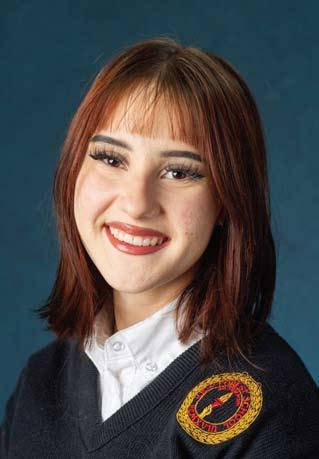












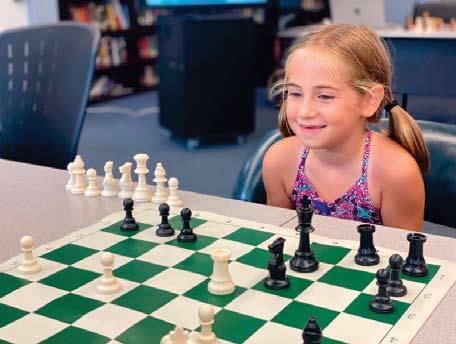








Sharing the loss of a baby with siblings is often unbearable for parents who are grappling with emotions and trying to process the tragedy themselves. “Many parents question if they should share this info with their children at all,” says Dr. Lauren Starnes, a child development expert and chief academic officer for The Goddard School, “but it’s a critical conversation to have if a child is expecting a baby to come into the home and they will no longer be arriving as expected.”
Young children lack perception so their thoughts, ideas, and concerns might be worse than reality. “Talking to them helps them make sense of what they are seeing,” says Dr. Starnes. Here, her advice for one of life’s hardest conversations.
As with all tough convos, it helps to think through what you’ll say, plus where and when you should have it. “Talk in a place where your child is most comfortable and when he or she is well rested to maximize their attention and focus,” suggests Dr. Starnes. This means not interrupting their play (at least for the initial convo) and minimizing distractions. Reading a book with your child can help open up the dialogue more naturally, too.
Because this convo can be very difficult for parents, Dr. Starnes recommends taking time to prepare in advance. “Parents can practice with another adult or write down the words,” she says. And if it’s too painful, having another person speak with your child is a perfectly acceptable solution. Dr. Starnes says, “The most important thing is letting your child know and giving them the opportunity to process and ask questions.”
Young kids don’t understand pregnancy and childbirth from an emotional perspective because they have concrete ideas of what is. Dr. Starnes suggests starting with a simple statement about what has happened and how you feel. For example, I think you saw me crying. Mommy/Daddy and I are sad because we are not going to have a new baby right now.
We both love you very much. The goal is to share the important information and reassure your child.
Dr. Starnes says it’s also important to avoid euphemisms, like gone to a better place, and clearly label the emotions to help children understand what they’re seeing and why. You can say, It makes me feel sad because I wanted to have a brother or sister for you. “You don’t need to share too much detail. Be simple and matter of fact,” says Dr. Starnes.
Adults tend to be uncomfortable with silence, but it’s important to resist the urge to keep talking. “We need to give children time to think about the words and any questions they have,” says Dr. Starnes. “They need to think and respond–or not. Silence as a response is totally okay.” Their response really depends on their verbal skills, their own life experience, how much exposure they’ve had to the idea of siblings and how much they knew about the baby on the way.
By pausing, parents also have a chance to take a breath and observe their child. Some children will physically exit the convo, while others may fidget or show they’re actively thinking. Parents can ask a simple follow-up question like, Are you okay? Do you have any
questions for me? How are you feeling? to allow them to respond if they wish.
It’s important to give your child control and let them own the conversation. As long as your child is having questions and showing interest, follow their lead but be mindful not to force a response.
“You know your child and their emotional level, so trust what you’re seeing and experiencing,” says Dr. Starnes.
Parents should also revisit the conversation at least once because the child may not be sure how to bring it back up. “Young children are curious and it takes them a while to process what they’ve seen and heard,” says Dr. Starnes. “This shows the child it’s okay to talk about and gives kids the chance to ask unresolved questions.” You can say, Yesterday I told you X, do you have any questions or do you want to talk about that?
Young children aren’t always aware of what should and should not be said. “This lack of life experience can lead them to make statements that are unexpected and may feel hurtful,” says Dr. Starnes. “Acknowledge how your child feels, then explain how you and other adults feel.” You can say, I’m glad you’re okay, but we’re still sad and we might be sad for a while so you might see us crying. Be careful not to negate or minimize a child’s egocentric emotions.
It’s okay to tell your child you don’t have all of the answers, while reassuring them that their health and well-being are not tied to the loss of the baby. “The goal is to offer honest reassurance,” says Dr. Starnes. “Answer any questions in simple terms and avoid metaphors or abstract phrases that children may not be able to understand.” If your child asks a scary question (such as Will this happen again?), it’s important to refrain from minimizing their curiosity, which is completely normal, adds Dr. Starnes. Answer simply and explain your emotion with the basic facts.








Open House: February 8 and March 15 • Scan the QR Code to sign up and learn more!







Choosing a school for your child is always a time-consuming, challenging process. If you have been considering a Catholic School future for your child - to save you time (and stress!), we’ve got the scoop on Catholic Schools in New York City and Westchester. If you’re considering a Catholic School for your kiddo, read on to learn how these schools have thrived since the pandemic, continue to maintain community, implement safety precautions and so much more.
First things first, here’s something you should know: The Archdiocese of New York invested over $18 million to ensure schools could open on time and without incident for the 2020-21 school year. School principals worked with the Catholic Schools Reopening Advisory Council to draft an opening plan that got kids back onto a regular schedule. The plan was accommodating and flexible for different family situations.
The schools also put out the “Rising Above” opening plan for 2022-23, detailing facility requirements and guidelines when it comes to COVID-19 safety.
It’s also important to note that the Archdiocese offers a variety of tuition assistance programs, including scholarships and financial aid to qualifying families at participating schools.
With investments like these, we feel good about kids continuing to get a great education well into 2023-24. Let’s take a look at some more highlights that are making Catholic schools stand out for the next school year.

When it comes to a good education, there’s something to be said about test scores. In 2022, the Catholic Schools in the Archdiocese of New York reported continued excellence in test scores. The all-important ELA (English language arts) state test scores went up 7.3 percent, while math scores held nearly steady with only a slight decline from pre-pandemic levels.
“This is a testament to the dedication of
our pastors, principals, and teachers in delivering a Christ-centered, academically excellent education,’’ Michael J. Deegan, superintendent of schools in the Archdiocese of New York, said. “These results demonstrate that our work will continue to achieve positive outcomes and elevated expectations for all our students.”
Deegan has previously noted that state test scores are one factor of academic success. The Catholic Schools in the Archdiocese use multiple measures of student growth and achievement. Deegan also noted that the schools took action throughout the pandemic that helped lead to educational success.
“Catholic schools have distinguished themselves in a way that we always knew but now the country recognizes,” Deegan said. “Through our strong test scores and post-pandemic performance, parents have recognized that what goes on in a Catholic school is not only richly Catholic but academically excellent. These two principles—our faith and our high-quality curriculum—are the underpinnings of everything we do.”
Although schools have remained open fulltime for in-person learning since September 2020, the Archdiocese has still made health and safety a priority.
The Catholic schools have been—and
continue to be—prepared for peak levels of respiratory illness including flu, RSV and COVID-19. Many of the precautions Catholic schools have had in place remain in the schools. These include:
• Exhaust fans in every classroom
• Frequent cleaning
• Ensuring good ventilation and air circulation throughout the buildings
• Thousands of HEPA filters deployed
Throughout the height of the pandemic, safety was a priority. Speaking of health and safety, you may be wondering how NYC Catholic schools took precautions during the pandemic to ensure little ones returned home from school happy and healthy. Maria Regina High School said last year: “All students are required to complete a daily health screening through the app SchoolPass…Students and staff entering the building have their temperature checked before signing in and moving to their classes for the day…Lunches are pre-ordered and individually bagged. We have increased our maintenance staff to deeply disinfect our school building each night after students and staff have left for the day”.
The Catholic schools also supported students by maintaining normalcy when possible. Many kept with their traditions by turning virtual. St. Raymond Academy for Girls, for example, hosted virtual spirit week and Christmas activities. St. Joseph’s School held virtual coffee house events.


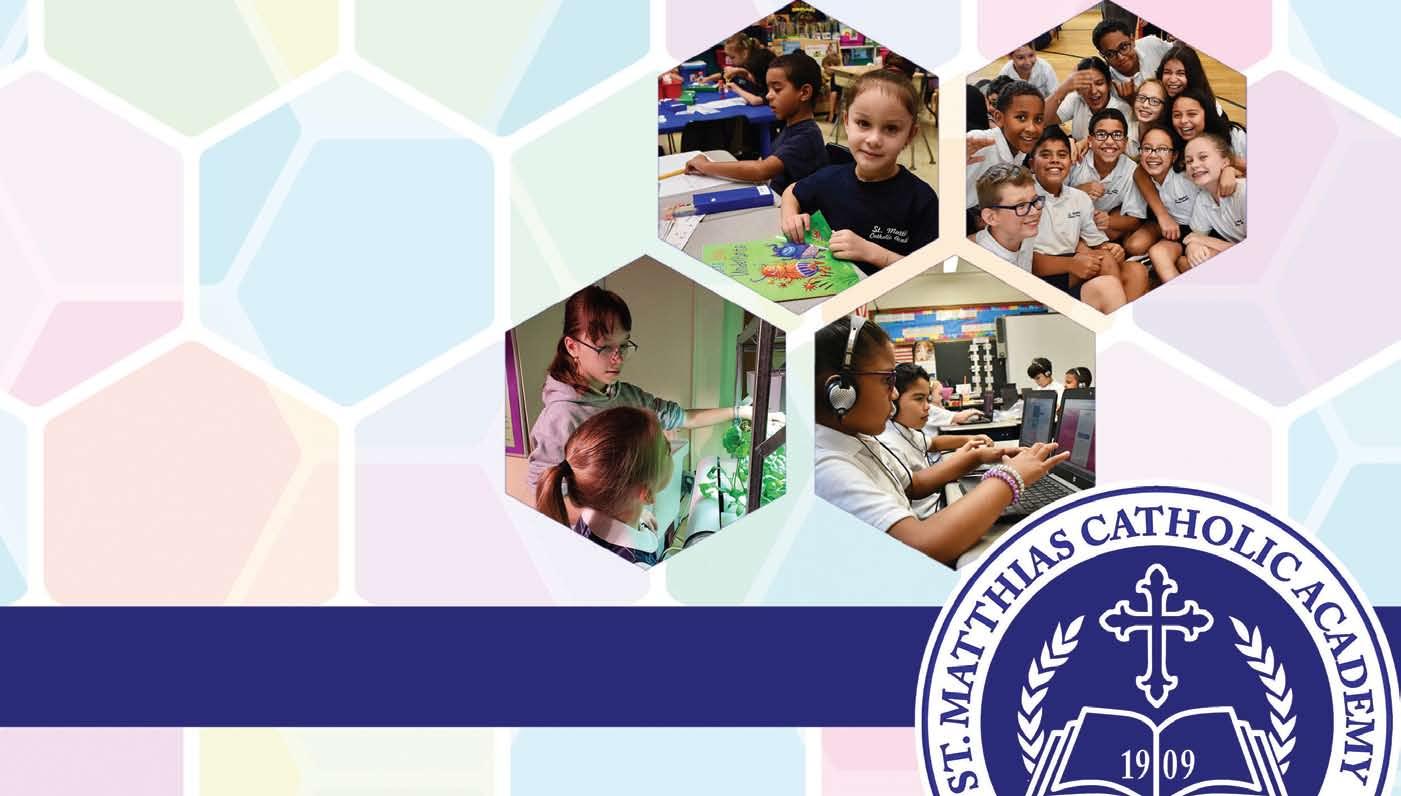

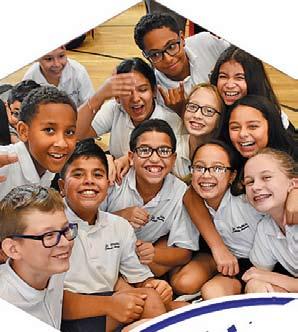

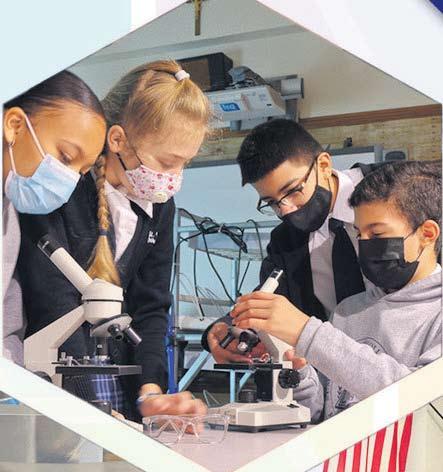





We all know that support also means communication. So if you choose an NYC Catholic school, how will you stay informed with what’s going on? “Our families stay connected to the school community via a number of channels,” said St. Raymond Elementary School, “We post updates of important information for parents both on our school website and on our Facebook page. In addition, our principal Eugene Scanlon emails updates to all parents and also sends home hard copies of announcements…Mr. Scanlon also publishes his Monthly Messages newsletter, which goes to parents and is also posted on our website.” We appreciate how St. Raymond Elementary School provides not just one, not just two, but multiple outlets for communication.
Jennifer Cedro Puglio has two boys who attend St. Peter’s Boys High School on Staten Island. She loves the sense of community and support network that thrives among the staff and parents.
“The staff and parents are a family. We all get along and work together and support
each other’s boys,” she said. “ We look out for each other. If the boys are doing something wrong, we are always there to guide them. The principal is amazing. He knows each boy by name and treats the parents the same. He is always there to talk and is open with us. This is what makes it a Catholic school.”
Now that you know all about the current state of NYC Catholic schools, you may still have some more general questions about whether a Catholic school is the right fit for your kiddo. Well, we’ve got you covered with that too.
Here’s the rundown: Catholic values and academic excellence guide NYC Catholic Schools. Students learn in an environment where respect, courtesy, and service to others are always part of the curriculum. Not only do these schools offer Math, Religion, English language Arts, History, and Science, but they have expanded technology in the classroom and STEM programs. Recent New York State Education Department
Examination results show that Catholic Schools in the Archdiocese of New York outperformed New York State and New York City schools in performance growth once again. Immaculate Heart of Mary, for example, has over 90 years of exceptional Pre-K to 8th grade education, and it’s been recognized as a National Blue Ribbon School of Excellence.

But New York Catholic schools are about a lot more than academic results. “When you send your children to Catholic school you are sending them for the community,” explained one parent in a recent Archdiocese of New York survey. Another parent said: “My children love their school. It is like family to us. They love their teachers. The teachers are the backbone of the school.” Community is a foundation at these schools, and it’s been a top priority to maintain during these challenging times.
Want to learn more about Catholic Schools and see if they’re the right fit for your family? Visit catholicschoolsny.org, check out catholicschoolbq.org, you can also go online to book a virtual tour.










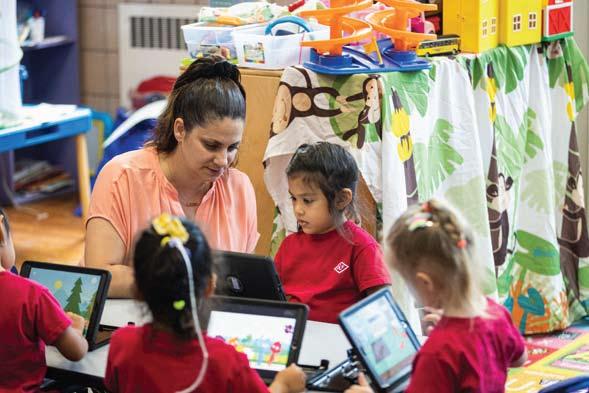


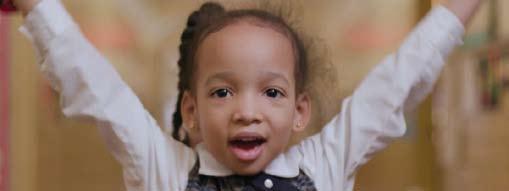




b roome Street academy charter High School (b Sa)
555 Broome Street New York, NY 10013
929-2853176


broomestreetacademy.org
Admissions@broomestreetacademy
Broome Street Academy (BSA), a tuition-free public charter high school in SoHo, provides a dynamic environment, responsive to every student’s unique needs. Housed under the same roof as The Door, a youth development organization, BSA offers unique holistic resources—from arts, college, and career programs to no-cost health services. BSA’s social workers and 9:1 student-teacher ratio ensures individualized support. BSA also offers athletics; afterschool clubs; AP courses; and a National Honor Society. Now accepting applications for the 9th grade lottery through April 1 st and transfers on a rolling basis.
n ew vision advanced m ath & Science H.S. iv
156-10 Baisley Boulevard, South Jamaica, NY 11434 newvisions.org/ams4
For Inquiries: ams4admissions@charter. newvisions.org
AMS IV’s is a STEAM school where the culture is centered on PRIDEPerseverance, Respect, Integrity, Discipline and Excellence. Our scholars experience a family like atmosphere that prioritizes project based learning and supporting their Social and Emotional needs. Through an advisory structure we ensure a strong connection between the school community and families. We offer scholar supports that foster life skills beyond graduation; by way of courses focused in College & Career Readiness, entrepreneurship, Health & Wellness. As a community, we push our scholars and staff to develop transferable skills that lend to their overall growth and development as well as their ability to maneuver through day to day interactions.
the renaissance charter School 2 45-20 83rd Street, Elmhurst, NY (CSD 24) 917- 242-3505
rencharters.org

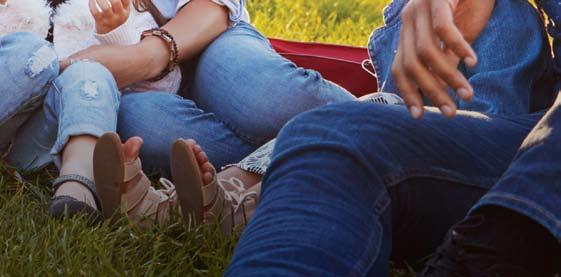

The Renaissance Charter School 2 offers students a dedicated learning experience. Their innovative programs will help students become life-long learners and global citizens. They are currently accepting applications for the school year 2022-2033 for grades Kindergarten through third grade.
TRCS 2 is located near the Elmhurst stop of the M/R train station and Q53 bus. Call 917-242-3505 to join their community or visit rencharters.org/ trcs-elmhurst for more information.

Our mission is to cultivate a STEAM learning environment strengthened by social-emotional and academic supports that incorporate our core values of P.R.I.D.E: Perseverance, Respect, Integrity, Discipline, & Excellence to promote lifelong learning.


OPEN HOUSE DATES
Friday, February 10th at 6 p.m. (Virtual)
Saturday, February 18th at 10 a.m. (In-Person)
Friday, March 10th at 6 p.m. (Virtual)
To RSVP to a virtual open house, email us at AMS4admissions@charter.newvisions.org or call (718) 525-2041.
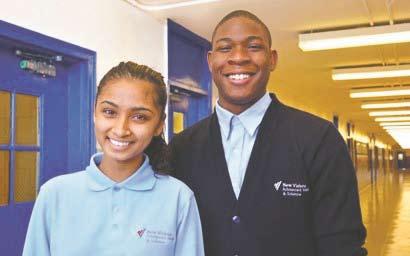
Through an advisory structure, we ensure a strong connection between the school community and families.

We offer scholar supports that fosters life skills beyond graduation; by way of courses focused in College & Career Readiness, Entrepreneurship, Health & Wellness.
Our grade-level school counselors loop with scholars from 9TH grade through 12TH grade and a social worker designated to lower house (9TH & 10TH grade) and upper house (11TH - 12TH grade).


Along with sports we also have programs such as My Sisters Keeper, Masters of Excellence, Helping Hands, Gay Straight Alliance. These programs are designed to promote scholar voice and acknowledge diversity.
Find us online! www.newvisions.org/applyAMS4 newvisionsams4





Mark you calendar for one special evening this winter, kids will take over Broadway! The Broadway League is once again inviting young people ages 18 and under to attend a participating Broadway show for free when accompanied by a full-paying adult.
The 25th annual Kids’ Night on Broadway takes place one night only on Tuesday, March 21, 2023. Fans can sign up for The Broadway Fan Club at KidsNightonBroadway.com to be the first to know when tickets go on sale.

A Kids’ Night on Broadway ticket also includes restaurant discounts and other perks. Select shows will offer in-theatre activities for kids including talkbacks, Kids’ Night on Broadway activity books, and other events still to be announced.
Attendees celebrating their first Broadway show experience will receive commemorative stickers to wear and add to their Playbill.
Kids’ Night on Broadway will also take place in multiple cities around the country, with different shows and venues putting their own spin on the event on several dates throughout the year. For more information, visit KidsNightonBroadway.com.
Kids’ Night on Broadway is a year-round
national audience development program of The Broadway League, the national trade association of the Broadway industry. Designed to introduce young people to the magic of live theatre and make Broadway accessible to a new generation of theatergoers. Kids’ Night on Broadway has welcomed young people to Broadway shows in New York and on tour across the U.S. since the program was created in 1996 by the League and Theatre Development Fund.









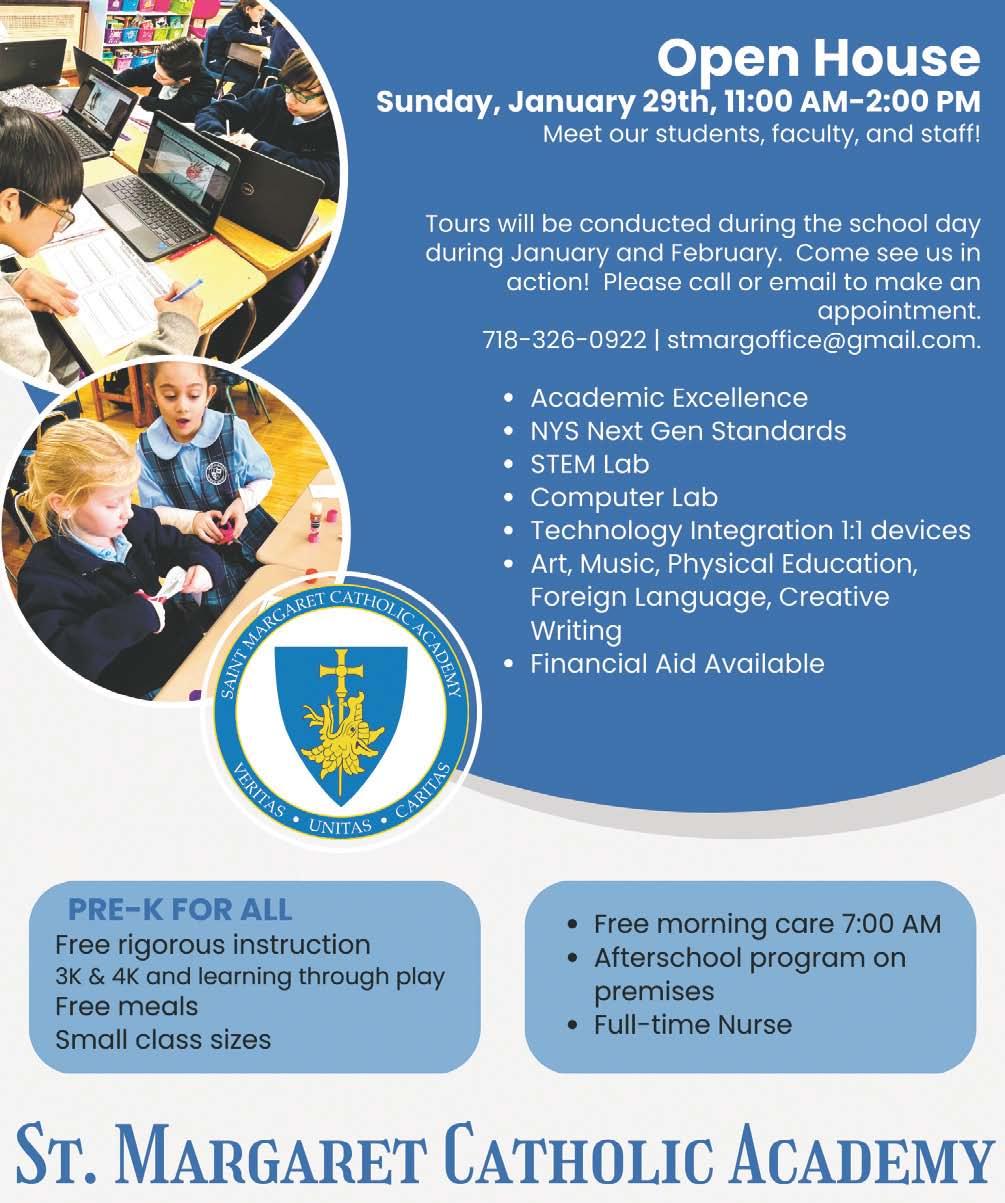


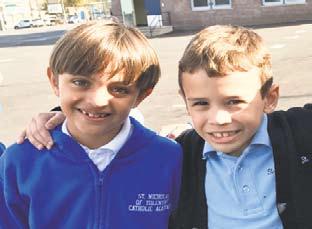

During the COVID lockdown, parents wore many hats. Teacher, cafeteria cook, and barber were just a few of our tasks, but the one challenging area was dental care. Of course, the kids brushed their teeth, but many of our kids went without dental care for a significant period. Once in-person appointments opened up, at least for me, it took time to get an appointment. I would have had better luck getting tickets to see Taylor Swift! This is because dental care is critical, especially for growing teeth. Thankfully lockdown is over, but the need to know how to take care of our kids’ teeth is not.
We checked in with our dental partners to answer questions about keeping our kids’ teeth healthy. We have the answers from in-between visits to a hack on warding off cavities after a meal to when is the best time for braces.
How can I make brushing fun?
Want to help a child brush better? Use music and a rhythm during the brushing routine. Also, let the child pick their favorite toothpaste and toothbrush. Have them involved in their oral care. Remember to brush and floss for 2 min twice a day. — Dr. Parul Makkar, Kids Dental, pdmfamilydental.com
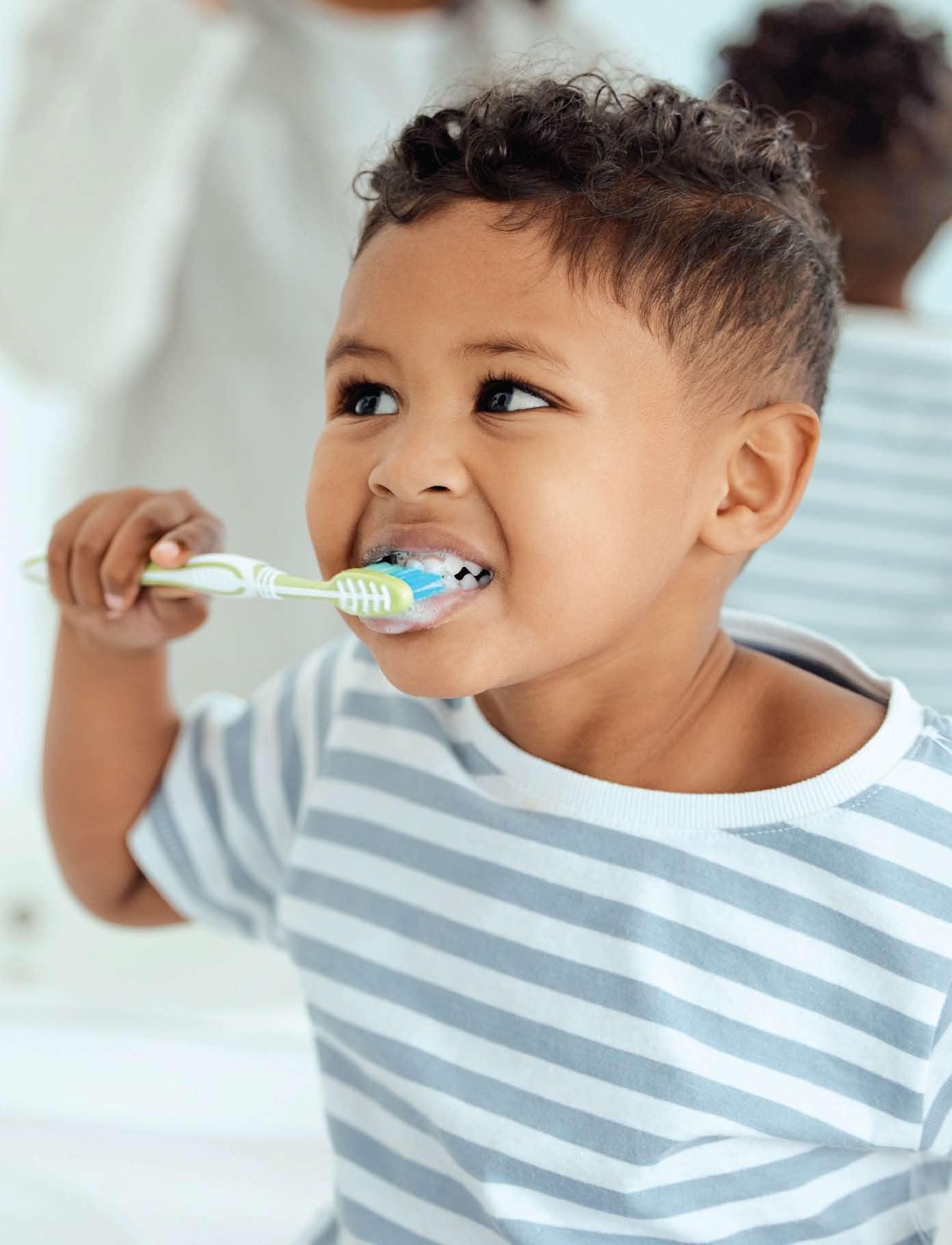
Any fun tricks when you don’t have a tooth bush handy?
After eating cookies, crackers or chips, eat a piece of fruit. It acts as a cleanser and prevents anything from sticking to the teeth causing cavities.” — Dr. Penny ResnickGraulich, Main Street Pediatric Dentistry, mainstreetpediatricdentistry.com
I have seen kids get braces pretty young and as teenagers. When should a child have their first Orthodontic consult?
The American Association of Orthodontists recommends that children have their first orthodontic consultation
around age 7. This is because by this age, most children have a mix of primary (baby) and permanent teeth, which allows the orthodontist to identify and evaluate potential issues with jaw growth and emerging teeth. Early evaluation and treatment can prevent more serious problems from developing and may make treatment at a later age shorter and less complicated. However, It’s important to note that every child is different, and some may need to be seen earlier or later, depending on their specific needs. If you notice any concerning issues with your child’s teeth, jaw, or bite, you should schedule a consultation with an orthodontist as soon as possible. — Dr. Seth Newman, Jackson Heights Orthodontics, jacksonheightsorthodontics.com
When is the best time to schedule appointments for kids, especially your child’s first visit?
One of the most common questions new parents ask about the dentist is when to bring their babies for their first visit. You should have your child come for their first visit as soon as the first teeth begin to come in. Pediatric Dentists specialize in treating babies and children can use this time to check and make sure teeth are coming in correctly and give you advice and tips on how to take care of your child’s teeth until they are old enough to manage the techniques themselves. By setting up regular appointments with the same dentist, your dental provider can keep a record and track your child’s unique dental progress. The rule of thumb is to schedule the first appointment between six months and one year. Starting around the age of three, it can be expected to start up the “regular check-up” routine, visiting the dentist every 6 months for an exam and cleaning.
— Dr. Phyllis Merlino, Todt Hill Pediatric Dentistry Staten Island, DrMerlino.com


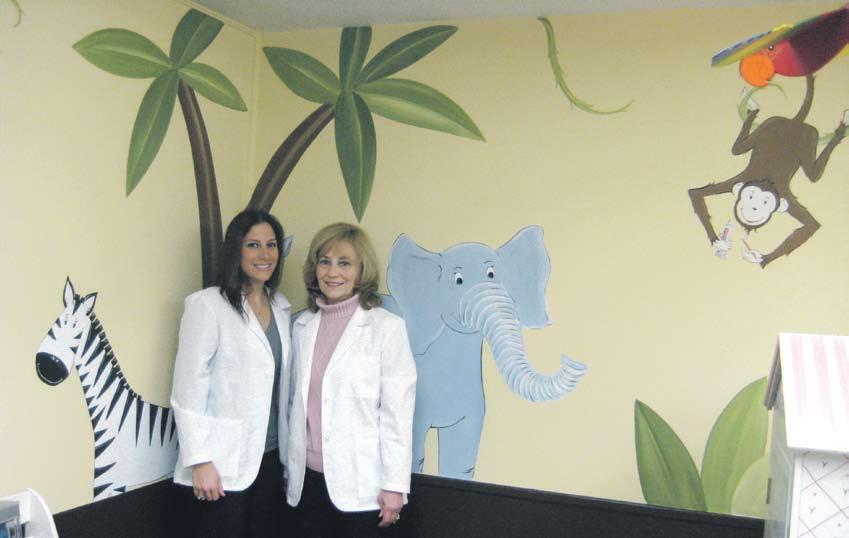

















LICENSED SPEECH PATHOLOGISTS & MYOFUNCTIONAL THERAPISTS





• LANGUAGE DISORDERS
• AUDITORY











PROCESSING DIFFICULTIES
• FLUENCY
• MOTOR PLANNING
• TONGUE THRUST



• FEEDING & SWALLOWING
• THUMB SUCKING












•ARTICULATION

SPECIALIZED
THERAPY APPROACHES
INCLUDING:


• MYOFUNCTIONAL
THERAPY

• PROMPT
•AUGMENTATIVE




COMMUNICATION
Take our Free Speech Screener:

844-5-SPEECH






















www.LIspeech.com




















9 Convenient Locations!
East Yaphank | Farmingville | Stony Brook

Commack | Islip Terrace | Jericho | Wantagh | New Hyde Park | Westhampton Beach


Did your teenager love summer camp as a child? Does he or she need a job but can’t work during the school year because of homework and activities? Maybe you’re ready for your teen to get employment experience but still have some carefree time outdoors away from electronics. Day or sleepaway camp is the perfect place for teens to transition to the world of the employed. The paycheck is nice, but being a camp counselor has other rewards, too.
As much a teens sometimes protest about it, learning responsibility is the gateway to more independence as they grow into adults. Camp is an ideal place to build accountability
because teens are in charge of other kids or activities, but they are still being supervised. If they work at a sleepaway camp, they must keep their cabin quarters neat and guide younger children to do the same. If they work at a day camp, they must show up on time, care for children and lead activities. Working at camp is fun, but it also gives teens a glimpse into the adult world with the guidance they still need.
Do you remember a teen you looked up to when you were a kid at summer camp? Maybe he or she helped you perfect your back stroke, taught you how to throw a curve ball or gave the perfect advice for dealing with disagreements between friends. Teens can connect to kids in ways that adults sometimes













can’t, and when teens work at camp, they experience the fulfillment of helping younger kids meet their goals and develop new skills.



From fun-centered sports competitions between rival teams to getting chores done for inspection, counselors and campers have to work together. Being able to do this teaches teens to hone their communication and interpersonal relationship skills. Camps even offer staff communication trainings and morale building activities before camp starts to increase awareness and create discussion about how to get along with others.
Teen counselors have to be on time to meals, the morning meeting at the flag pole, and the activities they lead. They’re also responsible for gently prodding their campers to be punctual. If they are in charge of a lesson, craft or game, they must plan ahead and make sure they have all the supplies ready and set up on time. These time-management lessons will benefit them as they enter college and the work place.
Most day camps and sleep away camps either
have a no device policy or have only short scheduled times with technology. Camp is the perfect place to do a “digital detox” and get back to nature, sports and face-to-face socialization.
If your teen works at a sleep away camp, he or she may get a taste of what college life is like. He or she will be responsible for meals, getting up on time or using a coin laundry. These are all valuable lessons that will prepare him or her for college. Also being away from home for an extended period of time for the first time can take some adjusting to and it can create some homesickness. Teen camp counselors have experienced these feelings and dealt with them before they go to college.







Is your teen an athlete? An artist? A nature enthusiast? Can he or she dance, write or program computers? Camp is an ideal
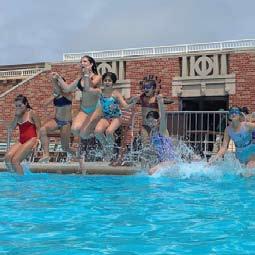




place for teens to share strengths. I served as a camp counselor when I was in college, and it was the first time I realized I had a knack for teaching kids. It was the gateway to me becoming a teacher, even though I was a journalism student at the time. Camp introduces teens to opportunities that maybe they hadn’t considered. It builds confidence and opens doors to future careers.




















One of the advantages of working at an overnight camp is that in addition to a pay check, meals and lodging are usually provided by the camp. Staffers’ work and life all happen at the camp, so gas use is minimal. Teen counselors chaperone camp trips to amusement parks and museums which are usually covered by the camp. Granted, these covered expenses do require responsibility and work, and are not solely carefree outings, but they are positive perks for a summer job.






Working at camp is great experience to put on a resume when your teen is ready to enter
the adult world of work. Camp experience is beneficial if your teen wants to teach or coach, but working at camp also builds communication, collaboration and problemsolving skills, all worthy resume additions that may catch a future employer’s interest.

Being a teen counselor is indeed hard work. It involves stamina, patience and responsibility. Oh, and teen counselors must also teach, guide and care for children younger than themselves. It sounds a teeny bit like parenting, right? Teens who are camp counselors may begin to recognize how hard parenting is. With that recognition, they may have a new appreciation for all their parents do by the end of the summer.
Being a camp counselor is a great start for teens who want to join the world of work. If your teen is interested in beginning the adventure that comes with being a camp counselor, you can find more information at the American Camp Association website at acacamps.org/staff-professionals/job-center.
The doorbell rings. Your loved ones are here, and everyone’s ready to spend a day as a family. After greeting your guests, you turn to your little one.
“Come give your grandparents a hug!” you say. But they refuse: your child doesn’t want to hug their relatives.
This is a story that many parents have experienced before. Children don’t always want to hug their relatives, especially if they’ve never met them before or they’re not as familiar with them as they are with other relatives, like their parents.

So this begs the question: what do you do when your child doesn’t want to hug their relatives?
We sat down with Kendra Moyses from Michigan State University and talked to her about what parents should do if their kids don’t want to hug their relatives.
Let’s answer the most important question off the bat: you shouldn’t force your child to hug their relatives, no matter who the relative is.
“We want to make sure that we’re not forcing kids to hug or to do physical touch with adults that they’re not comfortable with,” Moyses says.
This is especially true for relatives your child might not know as well.
“Developmentally, with young children, they have ‘stranger danger’ already, where they’re very shy of folks that they don’t know or that they’re not comfortable around,” Moyses says.
Asserting this boundary and supporting your children in this decision can be an uncomfortable conversation with some family members, but it’s not something that parents should be ashamed about.
Moyses says it can help to be upfront with family members and explain that you’re not comfortable making your child do something they don’t want to do and that you’re “making sure that they understand that they have the ability to say no.”
Letting children, especially younger
children, know that they have the ability to say no is important as they’re developing a sense of their own body and boundaries to avoid sending a “mixed message,” Moyses says.
“It can be confusing if, on the one hand, we’re telling them ‘you can say no to uncomfortable physical touch,’” Moyses says. “But on the other hand, we’re telling them, ‘no, no. You have to do this even though it makes you uncomfortable.’”
This consistency is incredibly important as children continue to grow and develop.
“When you’re not there, how will they know whether or not this is something that they feel comfortable with if they haven’t been given that autonomy to decide that for themselves?” Moyses says.
How can I prepare my children to see family?
If you know you have a family gathering with “new” relatives coming up, it can be helpful to think ahead. Give your child a heads up ahead of time, and talk with them about how they’ll feel comfortable greeting these new people. If your child doesn’t want to hug a
relative, it can be helpful to present them with some alternative greetings, like handshakes, fist bumps or even just a simple “hello.”
“Being able to have those in your back pocket so if they don’t want to do the hug or the kiss on the cheek, they’ve got these alternatives,” Moyses says.
Should I be concerned if my child doesn’t want to hug one of their relatives?
Your child not wanting to hug a relative isn’t necessarily a red flag related to something bigger. It could be, for example, just a case of conflicting personalities.
“Maybe your child is quieter and this adult is very loud, and that just bothers them,” Moyses says.
All children are different, so it’s a matter of knowing your own child’s personality. If your child changes significantly around a certain person, it might be worth looking into.
“It’s probably a good idea to ask some questions in the privacy of your own home,” Moyses says. “And give them the opportunity to open up and share.”



Have a Broadway fan at home? Then you have to visit the newly opened Museum of Broadway now open in NYC. Located in a 26,000-square-foot space, this is the very first museum dedicated to Broadway and the history of theater that features an impressive archive of beautiful and rare costumes, documents, photographs, props, and artifacts as well as immersive elements along the way.
This starts with a walk-through timeline, starting at the mid-18th century to the present day. Going from room-to-room, it was incredible to learn more about how live theater actually started in the financial district to Union Square and Herald Square to its evolution to the Theatre District in Times Square.
Throughout the space, you’ll see more than 500 shows highlighted. We loved seeing costumes from “The Lion King,” the arm cast from “Dear Evan Hansen,” costumes from “Hamilton,” the jacket from “West Side Story,” Annie’s dress, and the set model of “Wicked.” Walking through the timeline of each room, you’ll also see rooms dedicated to various musicals in history, such as “West Side Story,” “Oklahoma,” “Company,” “The Wiz,” and much more.
Along the way there are also several interactive elements where kids and adults can be “in” the show, and of course take pictures. My daughter loved going on the stage of “Rent,” playing a Producer, dancing along with an animatronic character in the “West Side Story,” sitting in the colorful “Hair” swing, and looking through the hall of mirrors.
We also loved the “Phantom of the Opera” chandelier installation with 13,917 glistening crystals. Each crystal represents the number of “Phantom of the Opera” shows performed since it opened it 1988. More crystals will be added to the installation when it closes in April of 2023.

After the tour of the Broadway shows, we were guided downstairs to learn more about what happens backstage. Each section was dedicated to the behind-the-scenes of a show where we saw how the props were laid out, a stage managers’ board, a lighting board, a
composers’ room (along with some videos), a makeup station, wardrobe room, and much more. There are also original sketches, plans, schedules, and more that show the intricacy of what it really takes to put on a show.
The museum also features special exhibitions, which currently features the drawings of caricaturist Al Hirschfeld. Guests can create a digital cartoon in this room as well as color and observe some of his collection of cartoons as well as his infamous oversized chair.
Educational and fun, we loved our
experience at the Museum of Broadway that left us with a new appreciation for the art of theater and its rich history.




Museum of Broadway
145 W 45th Street
New York, NY 10036
Tickets are $39–$49 per person
Student tickets are $29 and Senior tickets (for ages 65+) are $32 are available from MondayThursday.
The walk-through experience takes around 90 minutes-three hours to complete.
FREE Parenting Webinars coming soon - Sign up now!







MARCH


The Shifting ADHD/ADD Lens: Moving From Disability to Ability







With New York Times-bestselling author Dr. Edward Hallowell

Thursday, March 2, 2023, 4 p.m. ET











A Parenting Playbook for Raising the Happiest Kids on Earth

With cultural researcher, parenting expert and columnist Jessica Joelle Alexander
PRESENTING SPONSORS
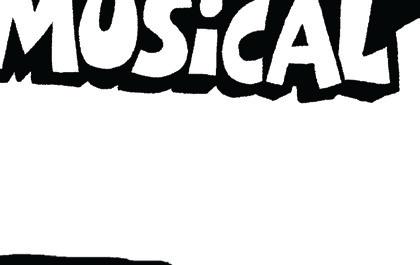
REGISTERED TRADEMARK OF DAV PILKEY TELECHARGE.COM 212-239-6200 DOGMANTHEMUSICAL.COM New World Stages, 340 W. 50th St.
Avisit to the American Girl New York store is a dream come true for American Girl (AG) doll fans. The NYC flagship welcomes kids of all ages for an incredible day of dolls and their stories, outfits, accessories, and interactive and educational experiences like the cafe, salon, and historic exhibits. Take one step inside the store and every visitor will feel like a VIP thanks to the warm, welcoming, and knowledgeable staff. Bring your doll for the ample photo opps and to create magical memories.
The flagship store has two, sprawling levels of fantastic fun. Some families will love that they can walk into the store and enjoy experiences without advanced planning and without spending a penny while others will love planning ahead to ensure everything is
scheduled and experiences are secured. Some families may plan a special visit to purchase their very first doll and others may plan an annual birthday visit. Whether you spend a few hours, half a day, or an entire day at the store, there’s no right or wrong way to spend time at AG. Savor every second and get ready for some doll and girl sized fun. Not sure where to begin? To plan the best visit ever, here is the ultimate guide to everything you need to know for your visit.
Suggested visit: It’s best to plan to visit for a few hours for a meal and doll fun but be warned – once your doll lover starts to play and explore, s/he won’t want to leave.
The Main Attraction: AG Dolls, Dolls, Dolls American Girl truly has a doll for everyone and AG experts say that it’s most important that the kids choose the doll they love best
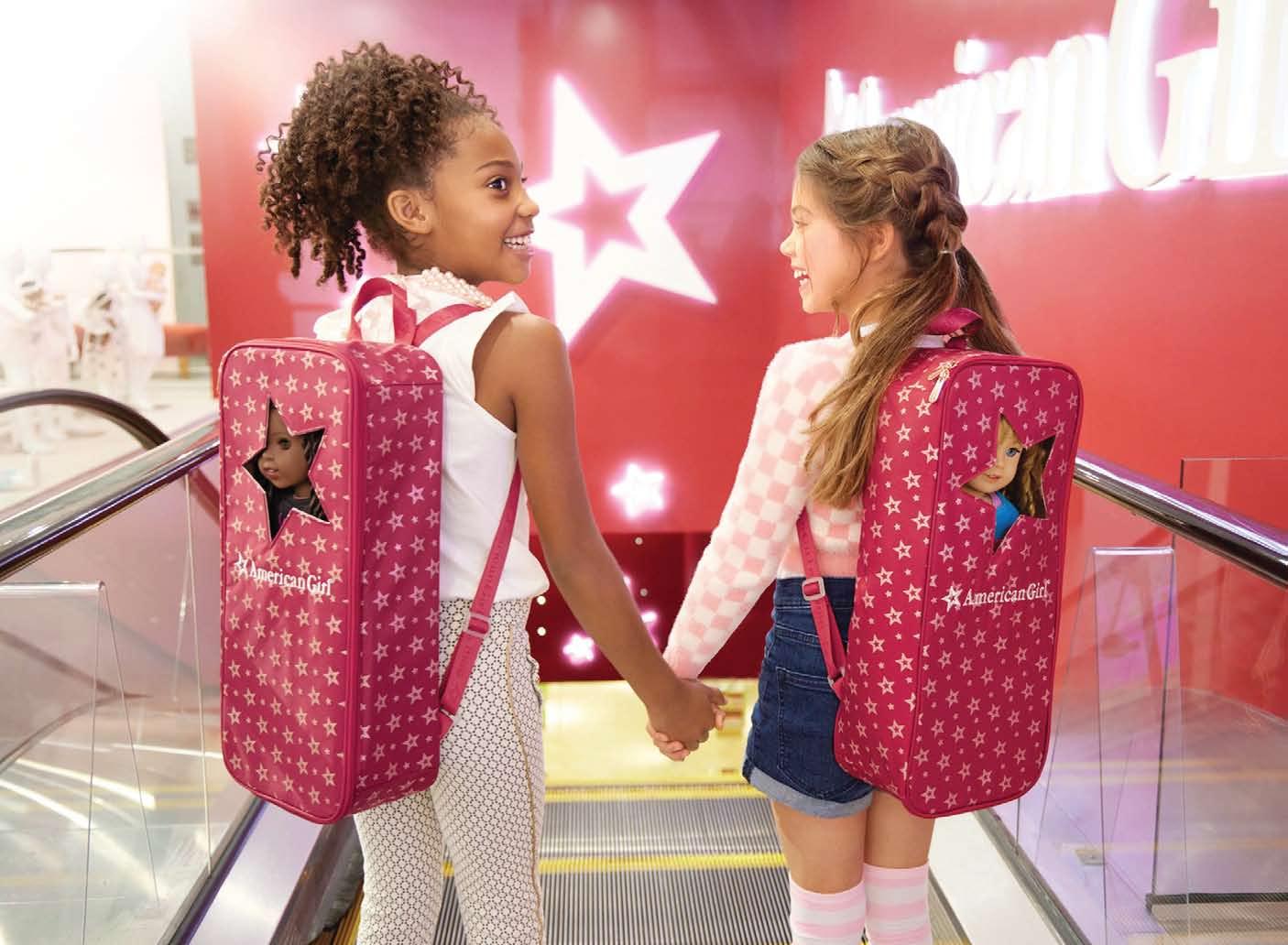
and not what parents love best. Throughout the store everything is thoughtfully placed at child height to be easily taken in and is fully accessible.
The heart of American Girl is its histori cal character dolls. Each of the AG doll char acters has an empowering story, bringing the past to life with inspirational, girl‑sized stories. Visitors will find each of the doll’s two books, stories, and accessories within each doll section. Everyone will also love the hands on and immersive doll experiences like playing basketball in Julie’s Groovy World, and admiring the revolving closet that mixes and matches bold ‘80s fashions in Courtney’s World.
Younger visitors may gravitate to Bitty Babies and Wellie Wishers and everyone will love the Girl of the Year, World By Us, Truly Me, and Create Your Own. The ever popular Truly Me is the contemporary line of dolls that reflects your personality and matches who you are and want the doll to be. Create Your Own is a special experience where you create your own doll and design one of a kind fashions with more than 2.4 million possible combinations. Pricing for these 18” dolls starts at $115.
The Dolled Up Salon is as darling as it sounds and offers services including girl and doll hair styling (the most popular hairstyles are twice twist and sweetheart styles), girl and doll ear piercing, girl and doll nails, and doll hearing aids. Girls will love that there are doll and girl styles that allow for the girls to twin with their dolls. There are lots of sweet extras and add-on as well like tiaras or spa packages. Everyone will be glowing inside and out after their visit to the salon. Be sure to reserve an appointment ahead of time and look at the styles online before you go. Pricing starts at $10.
The American Girl New York City Cafe serves lunch, dinner, and tea and has special occasion packages.. The café is the ideal spot to celebrate a birthday with their special packages complete with birthday cake, goody bas, and tiaras for girls and dolls. There are also private dining room for parties and special events.
Don’t forget to bring your doll to dine with you and if you don’t have an AG doll or forget yours, they have a beautiful selection of

dolls at the café to borrow for dining. Every meal there becomes its very own special occasion with the delicious food, sweet doll experience, and extra high touch. Dolls get their very own doll chair, plates, and cups to eat alongside their kiddo. Start with the cafe cinnamon buns and order fan favorites like the bow tie pasta and chicken fingers with the best French fries. And don’t miss the adorable and delicious chocolate mousse flower pots for dessert. Enjoy this tasty, three course meal for $27 per person and again, make sure to book reservations online in advance.
Anyone can make a free personal shopping appointment in-person or virtually. There is no budget or minimum spend required. Just book an appointment to have a shopper share their expertise and help you find what you’re looking for to get the most of the time together.
The hospital offers a free doll wellness exam with a specially-trained doll doctor who checks the heartbeat, pulse, temperature, and reflexes of each 18-inch patient. Once they
have a thorough exam (and little ones have lots of pretend doll doctor fun), a complimentary Certificate of Good Health is given to doll owners after each visit, along with wellness tips to help girls care for their dolls at home.
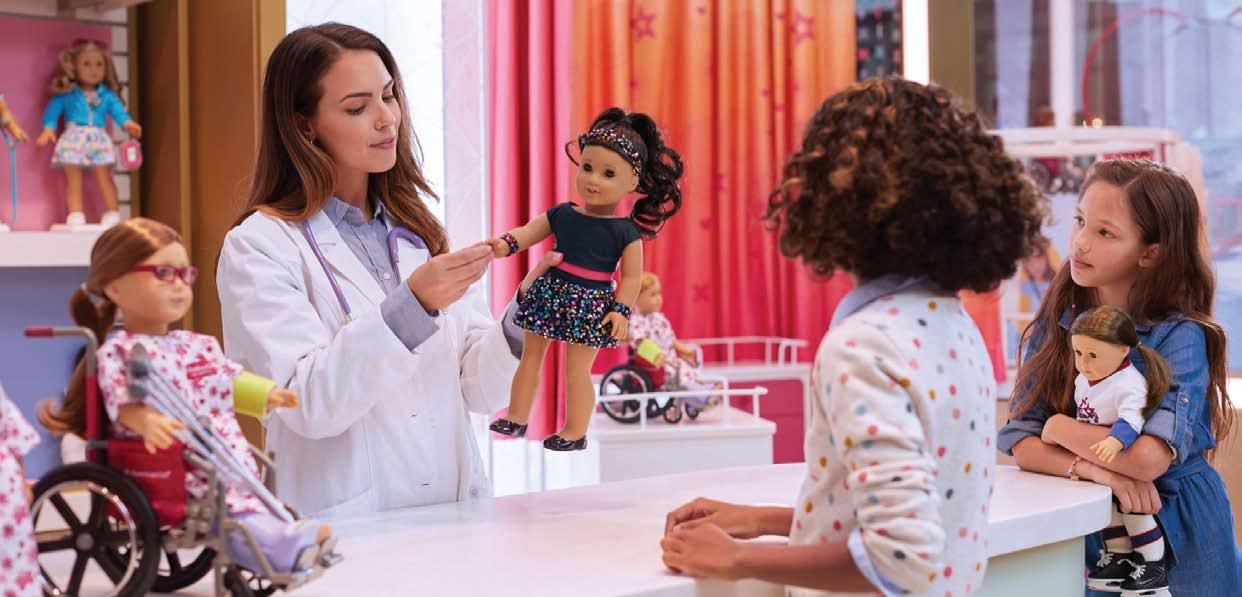
American Girl Store New York hosts a multitude of sensational, seasonal events, ranging from free Trick-or-Treat days to seasonal salon and activity classes (think Dolloween dance parties, pumpkin painting, and tea parties) for a fee. The full calendar of events is here.


The store has ever-changing displays and new fan favorites. Everything displayed can be purchased for any doll, and mixing and matching is part of the fun. There’s always something new and exciting and you cannot go wrong whichever way you go.
American Girl Store New York
75 Rockefeller Center
Store hours: 11am – 6pm (weekdays) and 11am-7pm (weekends). Check website to verify as hours may be subject to change.
 By Jeannine Cintron
By Jeannine Cintron
We don’t have a bullying problem in America. At least that’s what Sweethearts and Heroes founder and former MMA fighter Tom Murphy says.
When I first approached the anti-bully group, my goal was to learn ways a parent can help their child who is being bullied. After talking to Murphy, I decided to reframe my plan because, apparently, there is a larger issue at hand, and it starts with improving the emotional health of our children.
Sweethearts and Heroes is an organization that visits schools across the country, educating students of all ages on the negative impacts of bullying and empowering them to be more empathetic and compassionate individuals. Since its inception, the group has met with over two million kids, including over a thousand schools in New York State alone. I chatted with Murphy to get an understanding of what kind of social and emotional issues are plaguing today’s younger generation – one that is facing a whole new kind of bullying –and what parents can do about it. He began by explaining the group’s approach to the topic.
“From day one, the bullying problem has never been our focus,” he says. “Our message has always been about empowering students. People think our focus is empowering only the kids who are marginalized. But it would be a silly little trick for me to give a motivational speech and some kid is sitting in a sea of a thousand students and thinking ‘Tom Murphy said I can protect myself!’ Unfortunately, it’ll be a short period before that kid is humiliated again. Because that is that kid’s reality. You have no idea where they are coming from, what they have been subjected to, neurologically how they’ve developed over time, the culture that they’re in. It’s crazy to think that I’m going to fix a
bullying issue in a one-time speech. But you know who has the opportunity to help that child? The other kids who are walking the halls with that student on a regular basis.”
According to Murphy, we can’t be quick to label a child a bully.
“Bullying is habitual; it happens over and over. There has to be an element of intimidation or fear involved. It is an intentional act,” he explains. “But many kids operate on their feelings. Sometimes they have really difficult things going on at home. Maybe their parents are getting divorced, or their pet died. You can’t expect that kid not to come to school and say something mean or hurtful. We do it as adults! And we label that kid as a bully because he hurt someone’s feelings? This kid is labeled because he is struggling in life? Not that these issues can’t lead to actual bullying, but essentially bullying is an intentional act.”
Statistics show nearly 170,000 students skip school every day in North America because they are afraid to face their bullies. So what can be done about it? The short answer
is to stop it before it starts, using effective parenting methods. Murphy points out that while most people spend over 20 years preparing for their careers, they spend less than nine months preparing for parenthood. Yet essentially it’s on us as parents to teach our children to be kind and compassionate human beings.
“The greater issue is these human skills,” he says emphatically. “Empathy has been nearly cut in half in the last 30 years — both cognitive and affective empathy have been sliced in half in our students. So while we can develop a curriculum to teach kids about bullying, if you don’t have the neurological circuits in your brain that have been developed around things like empathy and compassion then good luck. Without empathy, there is no society. Being able to put yourself in someone else’s interreality and to say ‘ok they’re not me but I’ve got to work with them’, that’s the greatest struggle in our society. So I spend a lot of time identifying why empathy has degraded, and what activates it, and how to create environments
and conditions where it can grow and thrive.”
“We need to start having conversations dealing with feelings,” he continues. “Parents love to say ‘don’t be sad’ to their kids. But what’s wrong with being sad? I used to be so uncomfortable when kids would get upset around me. But then I realized that was MY issue. Anger is a natural feeling. And dads, in particular, are often terrible at stopping those natural feelings from happening. You can’t do that to your kid because they will grow up and not know how to manage those feelings, and they’ll be uncomfortable around people.”
Conventional educational methods don’t seem to be working, Murphy says. You can’t send your child to school and expect they will learn the human skills needed to be compassionate and empathetic beings, because it’s just not possible in that environment.
“The famous psychologist Benjamin Bloom talked about something called learning for mastery, ” Murphy continues. “He said that anyone can learn anything given the right strategy and the right time. Unfortunately our society doesn’t allow us to treat each child differently – but they are! They’re all unique individuals, and every child has 120 billion neurons that do 10 quadrillion things per second and they’re all unique! But it’s just really hard when you have a class full of kids that are jumping up and down and screaming, not to just treat them all the same.”
Perhaps the biggest problem is the role technology plays in bullying today. It’s nothing our parents ever had to deal with and nothing we, as parents of Gen Z children, were ever prepared for.
“Bullying has been around for thousands of years, and it’s always been the same format” Murphy remarks. “But when you talk about the last two decades, it’s drastically changed. There’s no reset button anymore. When we were in school, we got to go home Friday and escape from that feeling or the behaviors directed at us. For many kids, that reset button has been ripped away. I had one mom say to me ‘My son took his own life in his bedroom, in his private misery.’
“In over a decade, I’ve never seen these challenges young people are facing today. We were in two schools this year that had suicides the week before we got there. A school in Kentucky had three in the last year, after not having one in 22 years. One school had a 12-year-old young man take his own life on the playground and his best friend found him. It’s beyond belief that our children are
in such a state of hopelessness that they don’t feel like they can hold on to the possibility that exists for their future. How did we get to this space?
“Most kids don’t know how to talk about feelings of hopelessness. If your parents were born in the 50’s or 60 you didn’t talk about that stuff; you just hid it. But the research is extremely clear that talking about these things never makes them worse. The parents of today just don’t know how to talk about these things because no one talked about it with them.”
Technology isn’t the only difference between then and now, he goes on. “The most important thing is the human skills that we used to get when we were baking with mom or working on a car with dad or in the barn with grandpa,” Tom mentions. “These human skills have been nearly cut in half because we
just don’t spend that face time with people anymore in play. Self-directed and selfcontrolled play has been eviscerated. We just don’t allow kids to do it at even a fraction of the rate that they did 100 years ago. So when you ask me about creating a curriculum to end bullying, sure we can do it, but I think the greater need is for these human skills that used to be taught naturally by parents and extended families. Nowadays it’s about just rushing kids to get them to the next thing to do instead of really working on the whole child and these emotional states.
“When I was a kid, the kid who had down syndrome or was in a wheelchair was the easy target. I’m not saying it’s always the case, but largely, I feel like we fixed that. That kid is rallied around today. I think the kid with the mental health issues or emotional health issues is the new target today and we haven’t figured out how to talk about it and to understand that it’s a condition like any other condition.
“But I feel like maybe there is a change coming in our consciousness that these issues are not to be made fun of. The kid who sits in the back of the room with his hoodie up, he’s talking to us. He’s saying ‘I’m not doing good. There’s things going on in my life that I need help with and I need different strategies than other people because the ones you’ve given me, they don’t work for me.’”
Sweethearts and Heroes aptly calls kids who help other kids superheroes. “Every superhero is ruining things with their powers when they first start using them,” Tom says. “It’s your job to teach your kids how to use their superpowers to help the kid who is not being treated the right way.”
For more information about Sweethearts and Heroes or to book a visit to your school, go to sweetheartsandheroes.com.
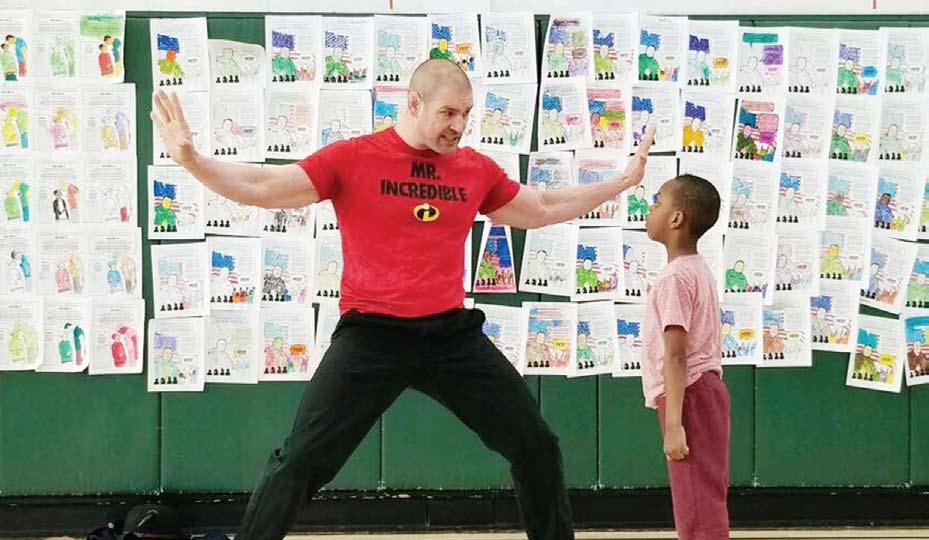
“I spend a lot of time identifying why empathy has degraded, and what activates it, and how to create environments and conditions where it can grow and thrive.”
It was a Saturday morning, I had just made my daughter breakfast, watched her eat it and then asked her to go up to her room to pick out an outfit and get dressed. She listened. At almost 5 years old, it’s hard to imagine her as the reckless, never-stopsmoving toddler she once was, or, better yet, the sleepless baby who woke up three times a night almost every day for the better part of a year. It’s even harder to imagine the frazzled, exhausted, overwhelmed me that existed during that time. But here we are. Now, she almost always sleeps all night, gets herself dressed and feeds herself. It’s wild.
But after breakfast I was suddenly transported back to those early days during my interview with social media content creator, Lucie Fink. Lucie is a new mom (son Milo is just over a year old) whose postpartum story is as relatable as they come—at least for me it was. As she recounted her experience I found myself either furiously nodding along or just sitting there, paralyzed by the similarities. I know motherhood is different for everyone, and I know that every baby is also different, but I believe moms have more in common than not. She said it best during our chat, “Since becoming a mom…I just feel this connection to moms that I never felt and it’s kind of wild.” I couldn’t agree more. It’s like we’re all in this secret club that’s not so secret, and no matter how we gained entry (biological birth, IVF, adoption, egg/sperm donors, the list goes on) we all share the burden and the blessing of being in charge of keeping a little human alive—and being their shining North Star in the process. It’s a lot to carry. Lucie says it’s “heavy” and she’s right.
She is set on keeping her platforms varied and exciting and not just about mom stuff— especially now that she’s feeling more like herself again. Many of Lucie’s 213K followers on Instagram, TikTok 440K and 417K subscribers
on YouTube are not mothers, so while she tries to balance her content to reflect all facets of her life, she can’t deny the major shift this last year has brought. Read on to learn about Lucie’s journey through her professional career, family life, and how her and her husband try to keep things as 50/50 as possible.
CP: Tell me a little bit about how you came to be a content creator.
LF: So I guess if I go back to my youth, I kind of had this split interest—I was fascinated by medicine and thought I wanted to be a doctor and then the other half of me was fascinated with TV and media. I grew up with a radio DJ for a dad and an interior designer for a mom, so I was raised in a very artistic, creative household and definitely was not pushed into a traditional career path. I was allowed to follow my passions. When it came time for college, I decided that the route I wanted to go down was the medical route. So I went to Johns Hopkins, and my first semester I was pre-med. Very quickly, while being surrounded by other students that were going down that medical route, I realized that my passion for media was actually more fitting with my personality type. Like, all throughout high school, I was in plays, I was the president of the Scarsdale High School Drama Club, my senior year and when I got to college, I immediately joined an acapella group—I was always performing. But really the one thing in college that I guess kind of kick started my career was during my freshman year I pitched a YouTube series that would live on the Johns Hopkins admissions website. My vision for it was like a travel channel type show about the city of Baltimore so that prospective students from around the world could see what the city has to offer without having to come to visit. They had never had a student that wanted to do something like that, so they said, ‘By all
means, here’s a student videography crew, go do whatever you want.’ It started as a total, extracurricular side passion, but after my first year, it turned into a full time job on campus where I was actually getting paid to make these videos. There were thousands of students who in their applications were writing that my videos were the reason that they were applying. So that was really my first experience .
CP: Let’s talk a little bit about how your presence on social media has changed since becoming a wife and a mom—what that means for your son, and how you’re navigating all of that.
LF: I’m lucky that I was with my husband since I started doing this because he’s always been a way more private person who has agreed to be in videos with me, if I ask him early enough—sometimes I need to put two weeks notice on his calendar that I need him for a video so he can mentally prepare (laughs). But I’ve always had to navigate being conscious of the fact that while I’m an open book and nothing’s taboo, I realized that a lot of elements of my personal life are actually his personal life, too.
CP: It’s not just your story.
LF: Exactly. I just feel like I try to be as open as I can myself while respecting his boundaries. And so when we got pregnant, we started talking about what are we going to do, because there’s just so many different theories—some people who are completely not sharing their children’s names or faces at all, then there’s some people who share a little bit or put emojis on top of the kids faces, and then some people who the whole channel is the baby.
CP: So where did you guys land? Or have you not landed somewhere yet?
Lucie Fink on her unique professional journey, her relatable postpartum experience, and how she’s balancing being a public figure with keeping her family’s privacy intact
LF: We landed in a place where we knew for a fact that we did not want my platforms to become a family vlog channel. My husband said to me, ‘If social media was a thing when our moms were young, if both of our moms were influencers, and put you and me on social media, maybe because of you and your personality, you would have been happy. But because of my innate personality, I would not have been pleased.’
CP: Do you feel like your love has deepened since having Milo?
LF: Definitely, but a lot of people warned me, our relationship has shifted a lot. And it has become way harder to find the time to connect just the two of us without Milo there, or without us talking about Milo. It actually takes a dedicated concerted effort to put in our calendar date nights and make sure we have someone to watch him. To go out and force ourselves to not look at pictures of him, to not talk about him. It’s definitely hard work. And even our New Year’s resolutions, a lot of them were about how at the end of the night, when we put him to sleep, not just putting in our own headphones and going about doing our own tasks, but connecting and doing highs and lows of the day, and looking at each other and sitting together and doing things together, because otherwise it’s easy to just put the baby to bed, finish up your work, and then get in bed and watch a show. So in a lot of ways, it’s gotten a lot harder, but the crux of it, has gotten way, way stronger. And I genuinely think my husband is in like the top 1% of partners in terms of how hands on they are with the baby. He works from home so he’s here physically, and he’s so 50/50. I hate to say that because I don’t like scorekeeping, but he’s definitely very involved.
CP: Again, very relatable. I loved talking to you about motherhood and hearing your journey into social media because I think it’s actually a very unique story. I think will be interesting for people to read about.
LF: What’s been exciting is since becoming a mom…I just feel this connection to moms that I never felt and it’s kind of wild.

You can find Lucie at: Youtube, Instagram, TikTok: @luciebfink. Facebook: Lucie Fink
This interview has been edited for brevity and clarity, please visit newyorkfamily.com to read the article in its entirety.
Queens theatre Presents
“ the monkey king”
wHen : Feb. 11-12, Saturday and Sunday, 3pm
wHere : Queens Theatre, 14 United Nations Ave South, Corona
ageS: 5 and older
wHat: This original musical brings you a cast of memorable characters, a mix of classical and rock music, and kung-fu style choreography!
want to go?: $18; 4 for $60 with code 4FOR60. 718-7600064. queenstheatre.org

national girls & women in Sports Day
wHen : Sunday, Feb. 12, 12-3pm
wHere : Al Oerter Recreation Center, 131-40 Fowler Ave., Queensboro Hill
ageS: 6 and older
wHat: Celebrate Title IX with an afternoon of sports and learn new skills with clinics in soccer, basketball, flag football, and more.
want to go?: 718-393-7370. nycgovparks.org
i love animals!
wHen : Sunday, Feb. 12, 11:30am-12:30pm
wHere : Alley Pond Environmental Center, 224-65 76th Ave., Oakland Gardens
ageS: 2-3
wHat: Listen to an animal story, observe 3 animal guests close-up, and make a heart-shaped bird treat to hang outside for birds in your neighborhood.
want to go?: $20 includes one adult. 718-229-4000. alleypond.com
Hands on History: Supreme black History
wHen : Saturday, Feb. 18, 1-4pm
wHere : King Manor Museum,
150-03 Jamaica Ave, Jamaica
ageS: 5 and older
wHat: Design your own gavel inspired by Thurgood Marshall, the first Black Supreme Court Justice and current Supreme Court Justice Ketanji Brown Jackson, the first Black woman to be on the Supreme Court. want to go?: 718-206-0545. kingmanor.org
black History month Steam & Paint
wHen : Saturday, Feb. 18, 3-4pm
wHere : Lewis Latimer House Museum at Laurelton Library, 134-26 225 St., Laurelton ageS: All wHat: Learn about African Tribal Adinkra symbols and use your own stories to bring your favorite symbols to life on canvas using acrylic paint.? want to go?: 718-528-2822. lewislatimerhouse.org
create & chat with Julia D. Shaw
wHen : Friday, Feb. 24, 1-3:30pm
wHere : King Manor Museum, 150-03 Jamaica Ave., Jamaica ageS: 5-12
wHat: Work with your child to decorate flowerpots for the Spring using African print textiles. want to go?: $25 per child with one adult. 718-206-0545. kingmanor.org
Queens theatre
Presents “ the beauty of ballet” by the School of american ballet

wHen : Sunday, Feb. 26, 1pm and 3pm
wHere : Queens Theatre, 14 United Nations Ave South, Corona
ageS: 5 and older
wHat: This family-friendly performance features excerpts from famous ballets, including The Sleeping Beauty, Swan Lake and The Nutcracker. want to go?: 718-760-0064. queenstheatre.org
gazillion bubble Show
wHen : Jan. 10- April 30, See website for schedule
wHere : New World Stages, 340 West 50th Street, Hell’s Kitchen
ageS: All
wHat: Witness mind-blowing bubble magic, spectacular laser lighting effects, momentary soapy masterpieces, and more! want to go?: $70$110.50. 212-239-6200. gazillionbubbleshow.com
Hip Hop cinderella
wHen : Feb. 10-26, See website for schedule
wHere : The New Victory Theater, 209 W 42nd Street, Midtown
ageS: 5 and older
wHat: See a fresh take on this classic fairy tale. want to go?: Tickets start at $20. 646-223-3010. newvictory.org
let’s celebrate Presidents’ Day!
wHen : Saturday, Feb. 18, 1-3pm
wHere : New-York Historical Society, 170 Central Park W., Upper West Side
ageS: All
wHat: Find out what it takes to become president of the United States, make your own campaign buttons, and more. want to go?: Included with admission: $6-$22; free for members and ages 4 and younger. 212-873-3400. nyhistory.org
Family art Project: love for woodland Friends
wHen : Feb. 11-12, Saturday and Sunday, 10am-1pm
wHere : Wave Hill House, 4900 Independence Ave, The Bronx
ageS: All
wHat: This Valentine’s Day, take a cue from the ways animals care for their families by creating woodland creature sock puppets.
want to go?: FREE with admission: $4-$10; $4 children 6 and older; free for members. 718-549-3200. wavehill.org
children’s book Festival
wHen : Wednesday, Feb. 15, 11am-1pm
wHere : Williamsbridge Oval, Van Cortlandt Ave. East, Reservoir Oval E, Bronx ageS: All
wHat: Celebrate all things books with special guest readers, arts and crafts, and more.
want to go?: 718-543-8672. nycgovparks.org
the orchid Show: natural Heritage
wHen : Feb. 18- April 23, Tuesdays-Sundays, and Monday federal holidays, 10am-6pm
wHere : The New York Botanical Garden, 2900 Southern Boulevard, Bronx ageS: All
wHat: Experience this immersive installation of thousands of orchids inspired by ancient Chinese garden design and artistic principles. want to go?: $35; $31 seniors 65 and older and students with valid ID; $15 ages 2-12; free admission for children younger than 2. 718-817-8700. nybg.org
black Future Festival
wHen : Feb. 19-26, 10am-5pm, daily
wHere : Brooklyn Children’s Museum, 145 Brooklyn Ave., Crown Heights ageS: All
wHat: Experience interactive dance performances, storytelling, genealogy workshops, art-making, tasty food, and more.
want to go?: $13. 718-7354400. brooklynkids.org
Jurassic world live tour
wHen : Feb. 24-26, Friday and Saturday, 11am, 3pm and 7pm; Sunday, 11am and 3pm
wHere : Barclays Center, 620 Atlantic Avenue, Downtown Brooklyn
ageS: All
wHat: Jurassic World comes to life with dinosaurs from the iconic franchise, pulsepounding stunts and an original, authentic storyline. want to go?: Tickets start at $50. 718-704-7332. barclayscenter.com
Sesame Street live! make your magic
wHen : Feb. 25-26, Saturday and Sunday, 10:30am
wHere : Kings Theatre, 1027 Flatbush Ave., Flatbush
ageS: All
wHat: Join your favorite Sesame Street friends for a magical adventure and find out that real magic can be found when you believe in yourself. want to go?: Tickets start at $20. 718-856-5464. kingstheatre.com
Valentine’s Day is here and that means fun ways to show your little one how much they mean to you. Your kiddo’s imagination will take flight with this cute hot air balloon that’s perfect for holding Valentine’s Day cards and plenty of candy!

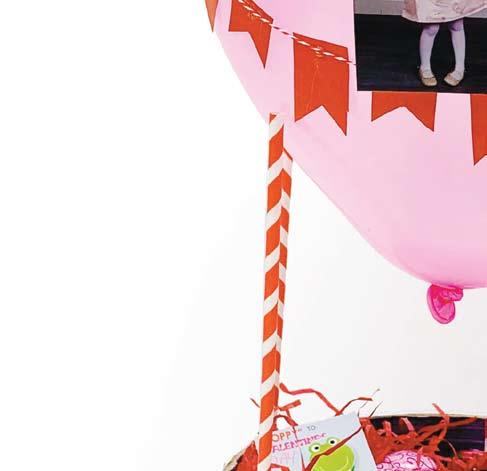


Materials
• Tape
• Permanent marker
• Felt heart stickers

• Basket
• Bakers twine
• Colored paper shred

• Scissor (Under parent supervision)
• Hot glue & hot glue gun (Under parent supervision)
• Paper straws
• Clear school glue


• Ribbon
• Balloons
• Cardstock
• Name tag
• Valentine themed favors/candy
1. First cut the handles off your basket. Be safe and help your little one by cutting it for them.
2. Now you’re ready to begin decorating your basket. Start with wrapping some ribbon around the edge of the basket and adhere it using the hot glue gun. Give your hot glue some time to dry.
3. Now you’ll need something to attach the balloon to the basket. Take your paper straws and hot glue them evenly around the basket rim. Then give it a couple of
minutes to dry.
4. Blow up your balloon and tie in. Then cut out several red flags from the card
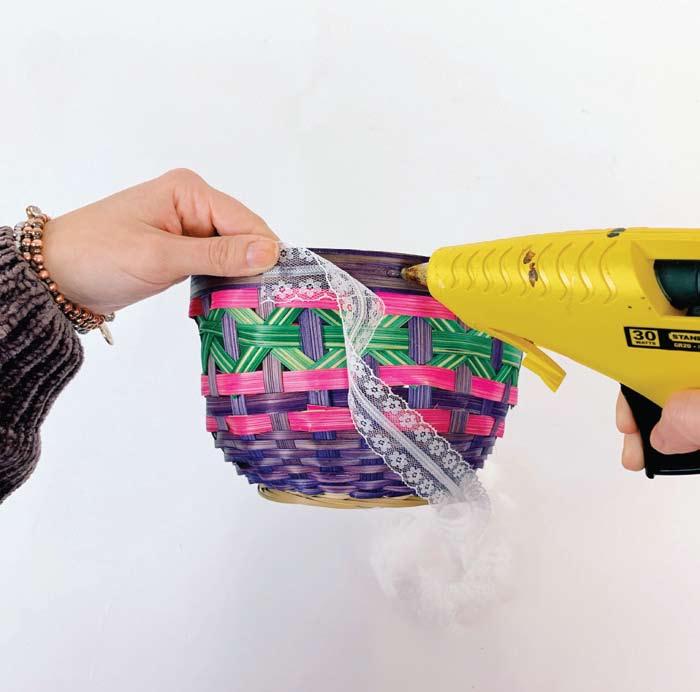
stock. Using school glue, glue these red flags to enough twine to wrap around the balloon. Separately, cut some twine and glue it to a length of ribbon.
5. Wrap both your flags and ribbon around the balloon. Attach the balloon and the basket, either by simply resting it on top of the straws or cut a few small strips of tape to attach the balloons and straws.
6. Write your little valentine’s name on the tag and use school glue to attach it to the side of the basket.


7. Add shredded paper, candy, and gifts to the basket. Finally, tape your favorite photo of your little one to the balloon.
















